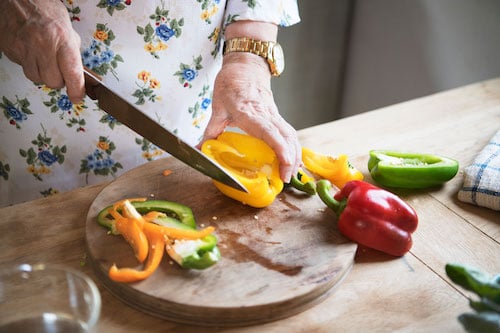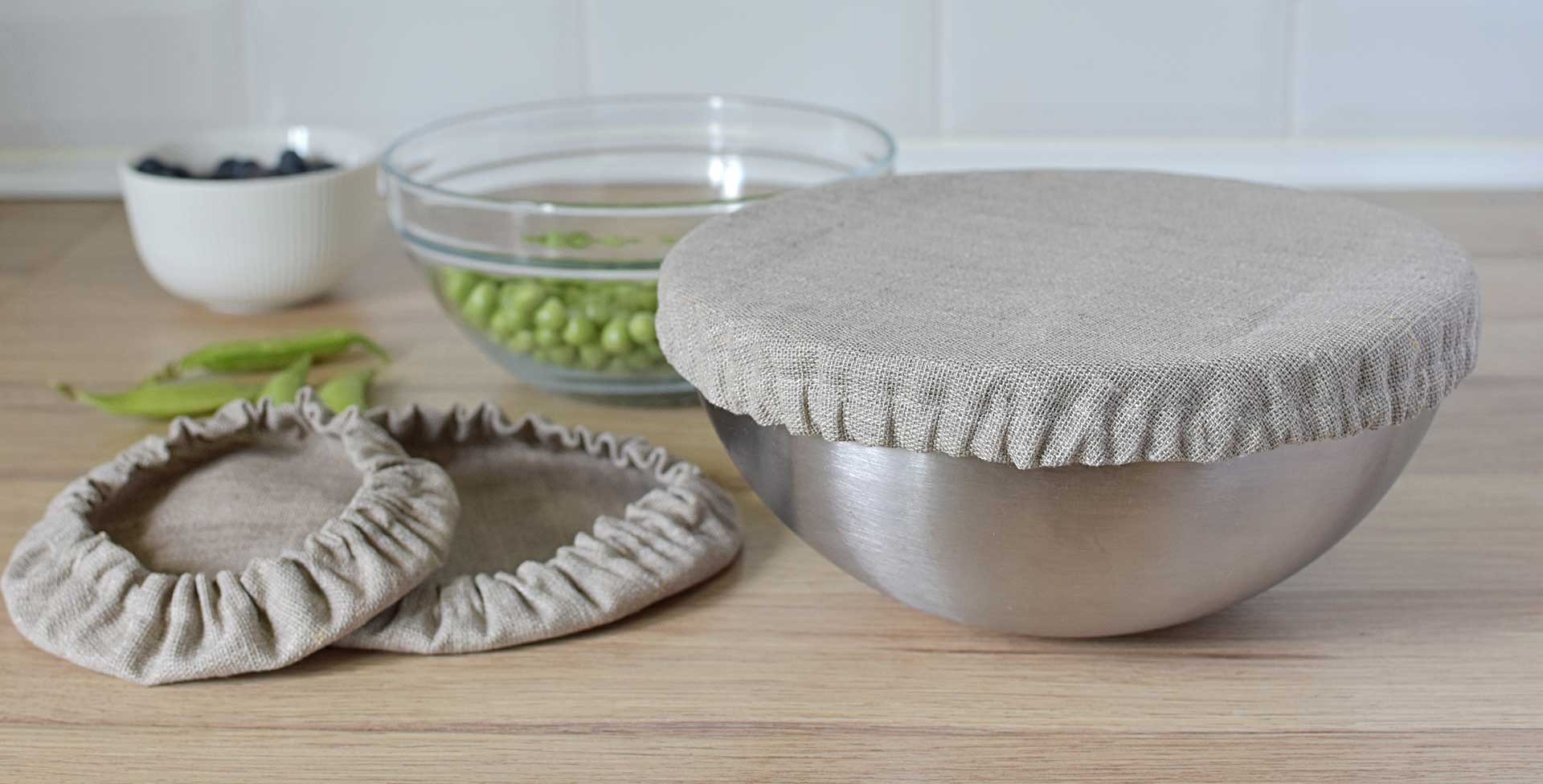How to Use Celery Leaves
Additional reporting and updates by Katherine Sacks.
Celery is fundamental in many dishes: its crisp, aromatic flavor is most frequently combined with the sweetness of onions and carrots to form the holy trio in mirepoix, it’s served on nearly every veggie-and-dip board and you simply cannot make a classic Thanksgiving stuffing recipe without this vernal veg.
But loved as it is, home cooks often reach for just the stalks of the celery plant, leaving the lovely and flavor-packed celery leaves behind. And who can blame them? Supermarket celery is often sold in bundles of celery “hearts,” sans leaves. But beware: this is a sales trick that very effectively convinces shoppers that we are getting the “best;” the store has graciously done the work of trimming the vegetable, leaving only the useable part behind. When you purchase celery this way, not only are you missing out on the flavorful leaves — which taste similar to fennel or anise — you are also missing out on food, AKA money!
Luckily, you can likely find celery with the leaves still attached, especially at the farmers’ market during the cooler growing seasons. And, if your local grocer doesn’t carry celery with the leaves attached, ask them to! After all, you deserve to get the whole vegetable, leaves and all.
The Types of Celery Leaves
Now that you have celery leaves in hand, you need to know what to do with them. First off, understand that the outer and inner leaves taste differently, and should be used appropriately so. The dark green outer leaves are intensely flavored — much more so than the stalk — but they can be a bit tough and fibrous. Use them in applications where texture won’t interfere with their enjoyment — these are great cooked until tender in soups and stews or pulverized in sauces or purees.
The inner, light green to chartreuse leaves are much more tender and delicate. They still pack more celery punch than the stalks — you’ll be surprised at just how much flavor they have — but their tender texture is fine enough to eat raw. These are great in salads or used as a garnish. Chop them along with the stalks for any recipe that calls for celery, but be mindful of their stronger flavor so you don’t overwhelm your dish.
How to Store Celery Leaves
To keep celery stalks freshest the longest, Cook’s Illustrated suggests ditching the plastic bag they come in and wrapping the whole stalk in aluminum foil. This keeps the moisture out but allows ethylene gas, which ripens vegetables, to escape.
If you need to use a stalk or two, but don’t want to use the leaves immediately, store the leaves separately. Place them in an airtight container with a damp paper towel in your crisper drawer where they will keep for several days. To keep them even longer, you can puree the leaves with a small amount of water or oil, then freeze the mixture in ice cube trays. Transfer the frozen leaf cubes to an airtight container and keep in the freezer; add a cube to soups, stocks, stews or sauces whenever you want a boost of celery flavor.
How to Use
Okay, you’re ready to start cooking with celery leaves! Here are a few ways to enjoy them:
Use Them as an Herb
Think of the dark green celery leaves as an herb and use them as a substitute for flat leaf parsley. Just be sure to mince them finely, as you would parsley, to break down their fibrous texture. Try them as a substitute in parsley-centric recipes such as tabbouleh or in a sauce such as salsa verde.
Make Salad
Add celery leaves to a salad where their bright edge can be a welcome way to cut through luscious and fatty ingredients such as cheese, nuts or soft-boiled eggs. Try it out in the recipe below.
Add Them to Beans
Celery and gigante bean salad is a dish fit for a prince, made with a pauper’s budget. Toss the tender, meaty beans with the pale green, inner celery leaves and perhaps a diced stalk or two. Dress them simply with a drizzle of olive oil and a squeeze of lemon.
Mix Them Into Your Breakfast Shake
Celery leaves pack a nutritional punch. Store the leaves in an airtight container in the freezer, then buzz them into your green smoothie or celery juice to start your day off right.
Turn Them Into Soup
Celery leaves bring a distinctive flavor to pureed soup: Think of it as vichyssoise 2.0. You can also use the leaves in soups that call for parsley as an aromatic, like chicken noodle or ribollita.
Add Them Into Eggs
Celery and eggs are a surprisingly good combination, a beat apart from your usual omelet combo.
Make Risotto
Full flavored, in-season celery — leaves and all — takes center stage in a hearty celery risotto.
Simmer Stock
Celery leaves are a welcome addition to any stock. But consider making a stock exclusively of celery leaves; use this concentrated liquid to add a tinge of flavor to your next batch of white rice or cannellini beans.
Braise Them
The tough outer celery leaves become tender during a low, slow braise and can share their aromatic flavor with the whole dish. Try the method with braised chicken.
Make Pesto
The end of summer’s basil doesn’t have to mean the end of pesto. Substitute in celery leaves for a cool weather take on this herbaceous classic. Spread it on sandwiches, mix it into chicken salad or toss it with pasta.
Use Them as a Garnish
Flavorful celery leaves are a great last-minute addition to sprinkle on top of everything from salads and soups to deviled eggs, dips and roasts.
How to Preserve Celery Leaves
Want to make the anise-y flavor of celery leaves last? Here are a few ways to preserve celery leaves:
Dry Them
Dry your leaves in a low oven or dehydrator. Pulverize and blend with salt for a handy seasoning. Or grind the dried, crumbled leaves and use like a spice to add an aromatic boost to recipes.
Pickle Them
Pickled celery leaves add a bright, acidic companion on a cheese or charcuterie plate.
Make Soda
Celery soda is a New York classic. A syrup made from both the stalks and the leaves is an intriguing base to make at home, mixed with soda water to use for cocktails.
Recipe: Celery Leaf Salad
Sherri Brooks Vinton
Serves 4
Use a combination of tender inner celery leaves and a few dark green outer leaves to give this salad a wide variety of texture and flavor. The fragrant anise-y bite of the celery leaves pairs just right with the richly flavored additions to the salad.
Ingredients
4 eggs
1/2 cup walnuts
1 tablespoon sherry or red wine vinegar
1 teaspoon Dijon mustard
Kosher salt
Freshly ground black pepper
3 tablespoons neutral oil, such as canola
1 cup celery leaves
3 cups tender lettuce, such as butterhead or mache
2 stalks celery, diced
4 ounces blue cheese
Method
- Place eggs in a small saucepan and cover with cold water. Bring to a boil over high heat, cover, remove from heat and set aside for 6 minutes. Using a slotted spoon, transfer eggs to an ice bath; chill until cold (about 5 minutes). Peel and set aside.
- Toast walnuts in a small saucepan over medium-low heat until golden-brown and fragrant, 8-10 minutes. Transfer to a small bowl; set aside.
- Whisk vinegar, mustard and a pinch of salt and pepper together in a small bowl. Slowly drizzle in the oil while continuing to whisk until dressing is well combined. Set dressing aside.
- To serve, toss celery leaves and lettuce with dressing to taste, and divide salad between four plates. Slice eggs in half and arrange 2 halves on each plate. Top with celery, blue cheese and walnuts. Serve remaining dressing alongside.
Get the latest food news, from FoodPrint.
More Reading
The ins and outs of vegan hot dogs
April 16, 2024
7 books about onions, garlic and the wide world of alliums
March 13, 2024
Eat seasonally this winter with persimmons
January 18, 2024
Commit to sustainable habits with our Reduce Your Foodprint Challenge
December 18, 2023
9 homemade preserves to gift (or keep) this holiday season
December 12, 2023
Get creative with these food preservation methods
December 1, 2023
Meatless Monday: The first 20 years
November 1, 2023
Why 2023 is the International Year of Millets
October 5, 2023
Eat more grains — and keep it local
September 29, 2023
When it comes to sustainable spices, 'single-origin' isn’t everything
September 8, 2023


